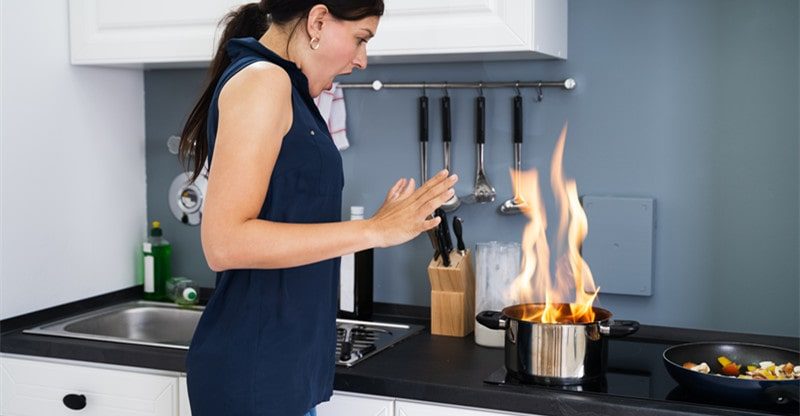How to Treat a Kitchen Burn and Avoid Infection
Cooking in the kitchen is a great way to unleash your creativity and satisfy your hunger at the same time. However, with so many spluttering sauces and hot surfaces, it’s very likely for foodie fanatics to sustain an injury just before dinner.
Although this is a normal part of life for any amateur or professional chef, it’s important that you know what to do in these situations. In this blog, we’ll be sharing all our top tips and tricks when it comes to treating kitchen burns and, most importantly, how you can avoid contracting a nasty infection.
Stop the Burn Immediately
First things first, make sure that you eliminate the source of the burn and put any fires out immediately. Remove contact with the fire or hot surface. In more extreme cases, you may need to put out the physical fire. Don’t add water to the fire, as this can make the situation worse. Instead, try to smother the flames and cut off their oxygen supply.
Remove any Constrictive Clothing
Next, you’ll need to ensure you remove any constrictive clothing or material that could potentially stick to the burn. Similarly, remove any rings, necklaces, or belts, as burns tend to swell up quickly.
Cool the Wounded Area
After you’ve stopped the source of the burn and removed any material from touching it, you should cool the wound and run cool water over it. We recommend you keep running cool water over your burn for around twenty minutes. Once the skin has cooled down, you should gently wash the burn with soap and water.
Determine the Severity of Your Burn
You’ll need to determine the severity of the burn and decide whether you need medical attention or not. Generally speaking, burns are classified as a first, second, or third degree. First-degree burns are mild surface burns. Second-degree burns may have some thickening and blisters in the affected area. Finally, third-degree burns result in a white, leathery appearance and widespread thickness, in which case medical assistance is advised.
Protect the Wounded Area
Once you’ve cleaned the burn, it’s time to protect it against infection. We recommend you use a non occlusive dressing to cover the affected area and wrap it loosely without applying too much pressure. Make sure you are using a sterile, non-stick bandage that will stay in place.
Prevent the Victim from Entering the Shock
In some extreme burn cases, the affected person could enter a state of shock. In this instance, you should lay the victim flat and elevate their feet around 30 centimetres or 12 inches. However, if they have suffered a facial burn, make sure they remain stood up or in an upright position.
Use Antibiotic Ointments
Once the initial steps have been addressed, it’s time to look after the burn. We recommend you apply an antibiotic ointment to the burn at least once or twice a day. Avoid applying any ointments or butter that contain fragrances as this could further irritate the skin. If you feel like the area is very dry you can use aloe vera gel to soothe the burn and speed up the recovery process.
Stay Out of the Sunlight
If your burn has left you with some scarring, it’s best that you keep the wound out of any direct sunlight. Your skin will still be very sensitive, therefore it’s best to keep the area protected with clothing and shade.
Leave Your Blisters Be
Although it may be tempting, it’s essential that you leave your blisters. We know it can be rather satisfying to pop your blisters and remove your scabs; however, this can lead to infection and will only drag out the recovery process.
Take Over the Counter Pain Relief
Last but not least, you can take some anti-inflammatory pain medicine to relieve any discomfort you might have. Medicine such as ibuprofen, Advil, and naproxen are very effective at reducing pain, just make sure to read the label and dosage instructions beforehand.
At the end of the day, it’s important that you keep your wound as clean as possible. If you find that it is not getting any better after a few days or weeks, then it’s probably a sign that you should visit your local doctor. Similarly, any burns that turn black, brown, yellow, dry, or leathery, should be tended to by a professional immediately. All in all, remember to treat your burn every day and be patient with the recovery process.



